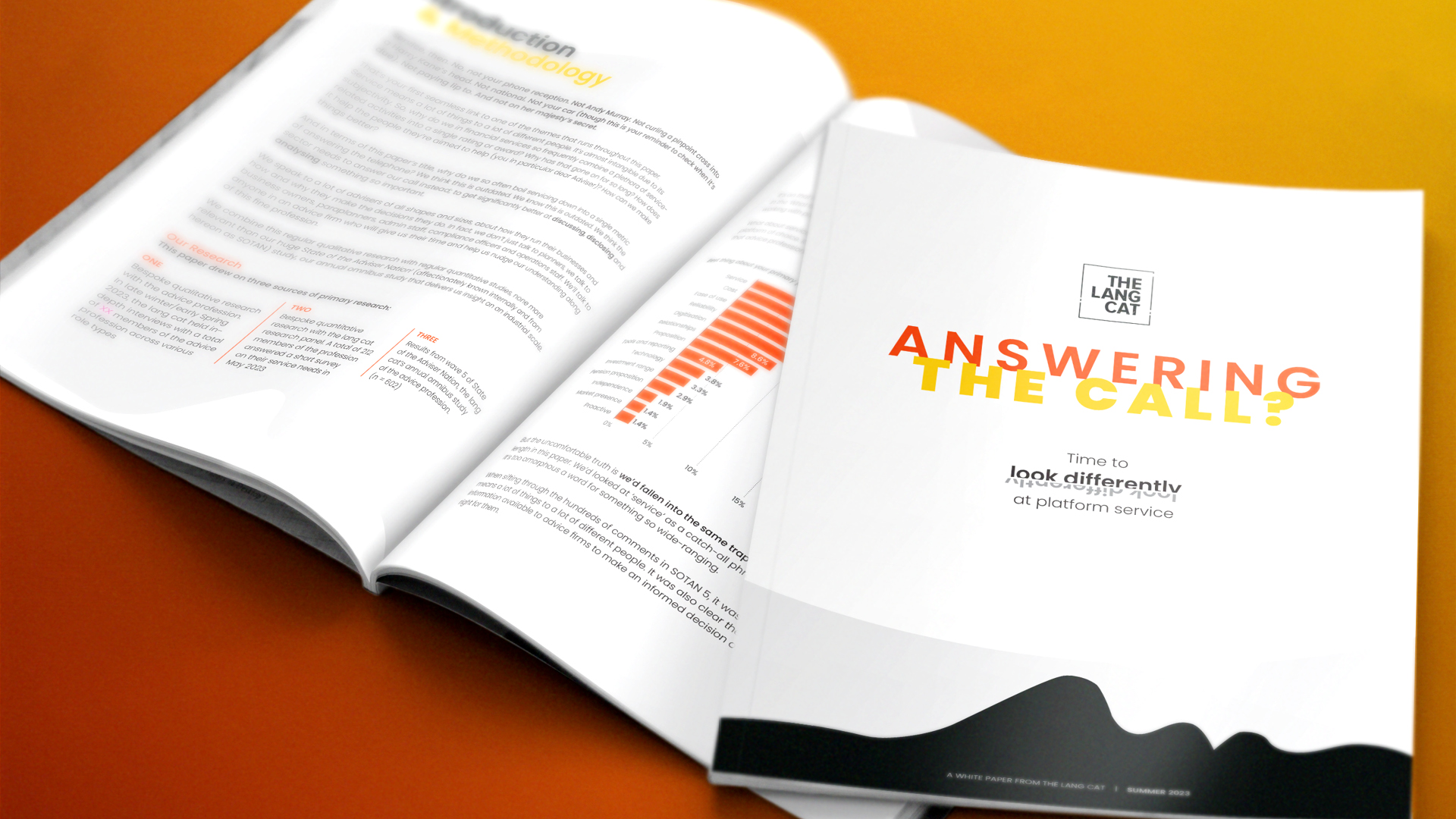Jings, crivvens and help ma boab, it was a year ago yesterday that we emptied the fridge, fumigated the harder-to-reach areas of someone’s desk (M**k L***e) and had a quick fight over who would get to take the rest of the bog roll home (me). We shut the shutters and that’s been that for a twelvemonth. Makes you think, and you all know how hard I try to avoid that.
After last week’s Update on Parmenion’s announcement, a couple of you got in touch to ask about how much of the advised platform market private equity now owns. The real answer to that is kind of tricky as not every stake is obvious. For example, we know that Epiris owns James Hay, but we don’t know – at least not officially – what kind of minority stake FTV Capital retains in True Potential.
Nonetheless, in this year’s lang cat State of the Platform Nation guide – available very soon – we have a decent crack at it and while I’m against sneaky-peeks on general principle, it seems churlish not to share it, and who knows, some of you might decide to be nice to us and pony up for a Platform Analyser subscription, which is how you get the Guide this year. More on that next week, and we’ll probably be a bit tiresome about it for a few weeks. But we’ve got to pay for Steve’s crisps habit somehow.
Anyway, we don’t have any PE firms funding Steve’s crisps, but we do have an increasing PE presence in the sector, and here’s how we see it, very roughly. The doughnut (mmm, doughnuts) on the left is how it was in 2016; the one in the right is how it sits once the Parmenion and Nucleus deals get over the line, assuming they do.
So there are a couple of interesting shifts here. First, you’ll see the yellow private equity bit has increased considerably at the expense of the grey privately-owned segment, but it’s still relatively small; the dominance of the ownership model of the biggest platforms just overwhelms everything else. Secondly, we’ve got a new ownership model in terms of platforms such as Transact and AJ Bell who have listed; we also have some big changes in the lifeco sector to account for.
And in terms of those changes, they tend to affect bigger platforms – in 2016 what is now The Aegon Platform was owned by L&G and, along with Old Mutual, Aviva, SL Wrap and Elevate made up a big orangey-red chunk (too orangey for crows; it was just for me and my dog). Spool forward five years and Quilter/OMW is now a publicly traded not-lifeco and thus a sort of greeny-blue. The same is true of the Standard Life stable of platforms; five years ago it was obviously a lifeco; but after the Phoenix deal we really can’t call it that any more and so it jumps to greeny-blue as well. We still class Aegon and Aviva as lifecos, and we say that M&G/Pru is one too, even though you could argue about that.
You can have fun guessing who else is who and all that, but if you want MOAR DATA then you’ll need the Guide. And that, my friends, is how you combine a helpful and diverting weekly Update with some advanced level #marketing.
LINKIVERSARY
- HomeGames plug – we’ve got Bill Vasilieff from yon Novia on this week. Bill is obviously a legend in the platform market and has a million war stories. He also blames us for the level of fee compression platforms have seen over the years, which I’m taking as a compliment, though I’m pretty sure he didn’t mean it that way. Either way, you should come and join us at 12.30pm here, or later on the YouTubes here. Next week is our HomeGameiversary, and we’ve got renowned horticulturalist Will Robins from Citywire for that one.
- Stats you want – here’s one. Only 1m individuals are still accruing private DB benefits; that’s halved since 2012.
- Please ready your finest six-year exit penalty jokes – Dame Helena has jumped from SJP to AJ Bell, despite its inexplicable lack of heavily embossed stationery.
- You know when folk said insistent clients and DB transfers were an unexploded bomb? They were wrong. It’s exploded.
- Our Steve won something and we are all very proud. Extra crisp rations for that man there (if any PE firms are reading, could we borrow the price of a multipack of Scampi Fries? Cheers.)
- And on the music front, I am reminded by one correspondent that there is more to life than Scandiwegian death metal; more even than last week’s choice of PJ Harvey (I can’t see how that can be true, but OK). They remind me that many people enjoy, and indeed find beauty in, pop music and they find slim pickings in the Update. Fair enough. This one, then, is for you. Please enjoy popular pop band Architects, with one of their pop songs called Black Lungs. It’s what I think is pop, anyway.
See you next week
Mark






